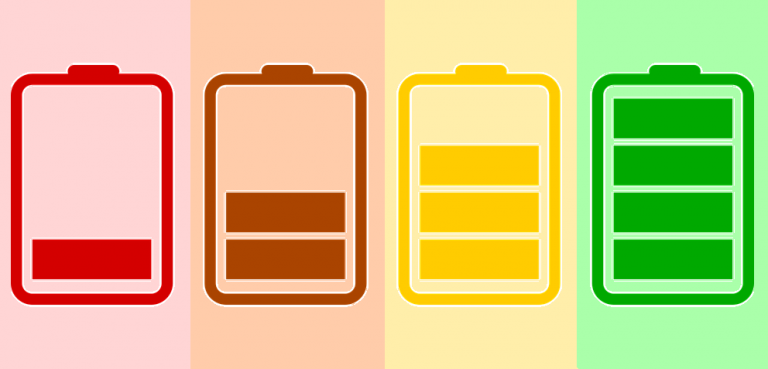Ultimate Technology Addiction Guide: Should I Be Paying Attention?

We are all on a device, most of the day, it seems. However, if you are concerned that for you, or a person you love, technology addiction has become a problem, it can be scary. Technology addiction, like any addictive behavior, can cause problems in people’s lives.
Many people do not realize how hopelessly they are addicted to the internet and technology.
Addicts use tech inappropriately, at times when they should not. They spend so much of their time online that many of them find it hard to complete a single task without using some kind of technology.
There are so many advantages of tech, it’s easy to ignore the negative effects sometimes. If you need to know whether or not to be worried about your teens use of tech — or whether you are developing an unhealthy attachment — we’ll cover how to know.
The Dark Side of Tech
Many people do not realize that technology comes with a dark side. The positive aspects of technology and the internet include providing users with much-needed convenience. Technology makes it easier to manage responsibilities and obligations.
It’s easy to see how dependent people are on technology. It has become necessary for anyone who plans to get ahead in life to rely on it.
Think about it. How often do you use the internet or online services to handle your business? Regardless of whether you’re a student or a career professional, it’s hard to ignore that technology has infiltrated every aspect of your daily life.
Technology addiction is that much more likely to occur when its use is that common.
Most American households have televisions, smartphones, and access to the internet. Even people who are homeless have access to cell phones and the internet.
As common and widespread as the use of technology has become, it is only a matter of time before people start wondering how much of it is too much or even unsafe.
What Is Technology Addiction?
Everywhere you go, you hear stories of people who have overcome their addictions to drugs, alcohol and other unhealthy behaviors. It is not too often, if at all, that you hear about someone struggling to beat an overdependence on technology.
It has become such a mainstay in society that going cold turkey or trying to develop a healthy dependence on it has become exceedingly difficult. But it can be done. The first step is to understand what technology addiction is.
A Forest for the Trees
Living in the Digital Age means that technology addiction is already so deeply embedded in society that there is no way for anyone to avoid it unless they go completely off the grid. Technology is no longer an optional tool.
It has become a vital component to promote communication, fast and efficient exchange of information, and other benefits. There is a growing number of people who are so attached to tech that they can’t perform basic functions, such as eating, grooming, and sleeping, without it.
You can think of technology as trees, and technology addiction as the forest they are in. It can be easy to miss the forest for the trees, as the old saying goes.
Our very existence coincides with their online lives. Technology addiction is an umbrella phrase. It includes obsessive, compulsive, and addictive behaviors stemming from excessive use of apps, online games, the internet, and smart devices.
Signs of Technology Overload
Many people do not believe technology addiction to be a major public health issue. But that doesn’t mean it doesn’t exist. And, it’s nothing new; in 2014 a couple was so addicted to gaming, their baby died due to malnutrition.
Researchers are aware of how influential the internet and technology can be, making it a top pastime for teens all over the world. In fact, China has gone as far as sending teens who suffer from technology addiction issues to boot camps in an attempt to cure them.
There currently is not a definitive guide on symptoms.
However, a hallmark of addiction disorders is when the addiction interferes with necessary daily life activities, like bathing, eating, working, or school attendance.
If you suspect that you, a close friend or a relative are dealing with the effects of technology addiction, these signs may indicate you are right:
Complaints From Friends, Family, and Bosses
Complaints about excessive internet and technology use from others may be a problem. Many people do not realize how much their technology use has gotten out of hand until their friends, family, and colleagues complain about it.
Some individuals may even go as far as ignoring their job duties just to go online.
Overly-Dependent On the Convenience
Using technology out of habit, not necessity, is a growing problem in society. The main benefit of technology is convenience. Some people become so enamored with how easy and less boring technology addiction makes things that they use it for everything, especially tasks that are more beneficial without it.
Feelings Of Shame
People who are ashamed of their behavior — or who do not want to hear others complain about how dependent they have become on it — may use deceptive tactics to hide or mask their dependency. Common tactics include being unreachable, spending more time in seclusion, and outright lying about their activities.
Losing Sight Of Real Life
Tech addicts can lose interest in real life, losing themselves in their devices and online activities. They may also structure their lifestyle so they can spend more time away from real life, to indulge their technology addiction.
They find it extremely difficult to resist the temptation to use technology.
In some cases, a person’s addiction is so severe that he or she suffers physically from it. They may develop carpal tunnel syndrome, text-neck, sleep deprivation, changes in eating habits, mood disturbances, dry eyes or headaches.
Examples of Technology Addiction
Even knowing the signs of tech addiction, some people still find it challenging to know if they or a close relative actually have an issue. During the early stages of addiction, it is not always easy to distinguish overuse from normal use.
Here are a few examples to help make it easier to spot signs of addiction. Remember, just being on tech all the time doesn’t indicate unhealthy behavior, it is when other aspects of life suffer.
- Scenario 1: Bobby is a 14-year-old student whose grades have dropped due to his increasing addiction to playing video games. Instead of completing homework, he spends most of his time at home playing games on his console, despite complaints from friends, teachers, and parents. He avoids activities he used to enjoy, preferring to game.
- Scenario 2: Jill is on social media so much that she can barely make it through each day without providing frequent status updates. She lives to interact with her friends online and cares more about their feelings than those of her close friends and family. Jill uses social media while at work and has been reprimanded for it. She often feels depressed and irritable when she can’t use tech.
- Scenario 3: John is obviously attached to his smartphone. He doesn’t care when people complain about him using it. He pulls the device out for everything, even to help him stay occupied while sitting in traffic, and using his phone while driving. Even though it is apparent to everyone around him that he is addicted, he refuses to believe that his use of technology is becoming harmful.
Addictions interfere with the normal thought process and actions of those who are afflicted. Some people are more disposed to developing addictions. Though technology is beneficial in the modern world, it can lead to unhealthy dependence when preventative measures are not taken.
The Impact of Technology Addiction
For the most part, technology has been good for society. There are even schools of thought that do not believe that internet addiction has much scientific basis. However, like most things that are used in excess, there is the possibility of users developing an overdependence on it.
In cases of technology addiction, the downsides of tech have strong effects on an addict’s life.
There are advantages that are hard to give up, after all. For instance, online banking makes it possible for people to manage their accounts without having to set foot in banking institutions. People who have mobility issues can get what they need to be delivered, online.
There is a fine line between healthy technology use and unhealthy dependence. It is important for parents to keep track of their kids’ reliance on the internet and online activities, and recognize when intervention might be necessary.
Coping With Technology Addiction
There are different ways to handle tech addiction.
The first step, however, involves the sufferer recognizing and admitting they have an unhealthy relationship with technology. They must also be willing to do something about it, such as cutting back on its use and seeking out professional help.
Because most of us spend hours on smartphones and devices, it is not always easy to identify when someone might have a problem. Even though it is the norm to use smartphones, social media, apps and other technology every day, there are behaviors to watch out for.
Knowing when you might have an addiction-to-tech problem enables you to get help early on before the addiction can really take hold — making it less challenging to overcome.
Think about how getting on your smartphone or using other strong technology background makes you feel. Do you feel euphoric and insanely happy and relieved? One reason addictions are challenging to deal with is because they elicit hormonal and mental responses (highs and withdrawal symptoms).
Technology addiction is a problem when technology interferes with:
- Your mental and physical health
- Your education
- Relationships with family, friends, and coworkers
- Your job performance
If you find any of those are happening, it is time for you to do something about it.
If you realize your child may have a problem, require them to participate in more age-appropriate activities with peers. Sign them up for extracurricular activities — or anything that is interesting — to help break the cycle of dependency on smartphones, video games, and other tech.
The goal is to limit the amount of time children spend online, with activities that promote physical activity.
For adults and children alike, these tips can help reduce tech time:
- Occupy idle time. Come up with things to reduce idle time. An idle mind leads to idle hands and an inescapable urge to pick up a smartphone. Make a list of alternate activities, together with the affected person, try to do one every day.
- Use a timer. There are many apps you can use to time the amount of time spent online. Some apps automatically prevent access after a set amount of time has passed. If you don’t want to rely on an app or program to determine when technology time is up, use a traditional timer.
- Start small. It may seem like the best thing to do is for you to start off by completely restricting access. This may cause more harm than good. Instead, you may want to start off small and increase the intervals until you have achieved a good life and technology balance.
- Take breaks. Encourage the addict to take frequent breaks. Getting up to stretch, do a little yoga, mediation or take a short walk to clear the mind often can help retrain the mind.
- Power off. Sometimes it is necessary to turn everything off to reclaim someone from tech addiction. At night, turn off notifications or power off smartphones, tablets and tech devices so they are out of sight and mind. You may find you sleep better cutting off tech use two hours before bed.
- Professional help. Sometimes it is necessary to get professional help for technology addiction. Many addiction treatment centers offer different treatment programs. It is important for you to take into consideration the person’s personal needs and responsibilities.
Consider their situation
If you think a treatment program is necessary, choose a program that won’t derail the person’s life if possible. Students or employed people probably can’t use inpatient treatment options without sacrificing more time than most can afford.
Often better than treatment, as a first option, is building a support network. Hold each other accountable for staying off of devices when they should be living life. Actively learn to turn off tech, and engage with your support network.
Friends, family, and others should be as encouraging as possible.
It is important to understand that there is no cure for addiction disorders. Once a person develops an unhealthy attachment to a substance or activity, they’re likely to struggle with that for life.
Fighting an addiction is an ongoing battle that gets easier over the long haul.
Technology is an essential part of life, and there is no way to escape its influence. Technology addiction disorders are avoidable. Pay close attention to habits and make changes when necessary to prevent unhealthy dependence from developing.
Advice About Tech Addiction
Anyone who is concerned they or someone they know has developed an unhealthy reliance on technology should trust their instincts. It is only natural for people to defend their actions, especially when they are caught in the throes of addiction.
It is better to watch their actions instead of relying solely on what they say. For example, they may profusely deny they have a problem, yet their behaviors show they can barely stay off the internet or their smart device for longer than a few minutes at a time.
When approaching someone about a possible addiction, make it known you are there to help, not attack. Do not attempt intervention alone. There are too many missteps that can occur during the intervention process that could delay recovery.
Instead, it is advisable for the entire household to seek out counseling and intervention services. Changing the entire family’s lifestyle to prevent issues and how they interact with the person who is addicted to technology is a good idea.
Evaluate Addiction Treatment Options
Many people find it beneficial to look into outpatient and inpatient treatment options when treating addiction. If you believe that an addiction to technology has become severe enough to require treatment, talk to your doctor or local treatment center.
Remember, when recovering from an addiction, it’s a long-term situation. Support from friends and family is essential, and so is avoiding triggers. Unhealthy addictive behaviors adversely affect our daily lives. Addiction to technology can be a big problem.
However, understanding behaviors, and balancing your tech use and (in real life) IRL life is possible and healthy for you. Moderation, unplugging regularly, and building a support network are your first steps. Seeking professional help is also a good option if you are already facing problems caused by addiction.













